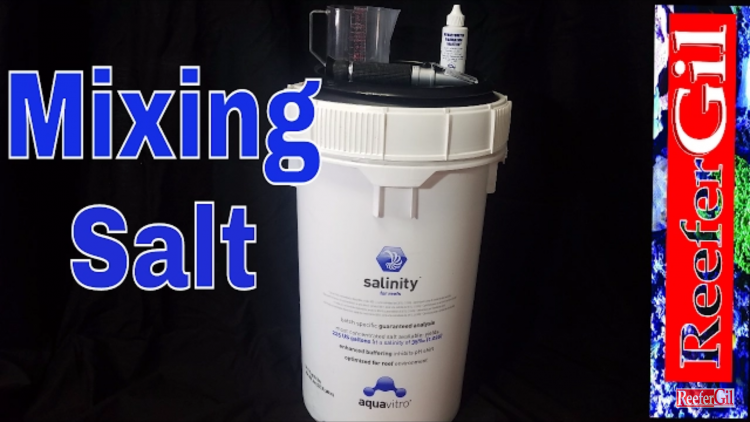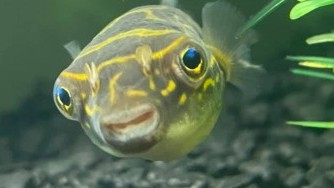Mixing Salt In Saltwater Tanks Made Easy
- May 14, 2021
- Anshika Mishra
- 388 0 0

Almost all the newbies are intimidated by mixing salt required in the saltwater hobby. This article will cover all the basics and will hopefully make you better at mixing saltwater.
Material Required
If you are new to the hobby or thinking about getting in the hobby, then it is highly recommended to get your own RO/DI system. You can either permanently mount it, or you could have it and keep it beneath the shelf and take it out when needed.
One of the biggest key factors to having a successful reef tank is stability. There is no better way to make your water stable than using your own water source continuously and the same salt mix. Going back and forth to your local fish store to buy their water is going to get old pretty fast. Also, you will never know when they change things up which is going to throw off the stability in your own tank. For mixing the saltwater you will need a container or water, big enough to hold your water. You will also need the following items:
- Salt-mix
- A measuring cup
- A pump A heater
- A hydrometer or a refractometer
You can take the salt-mix recommendation from your local fish store, given you will be purchasing your saltwater fishes for that store, it is good to use the same salt mix as the store. As per the directions on the salt-mix container, most of the salt-mixes recommend using half a cup of salt-mic per US gallon.
For doing 20-gallons worth of water, you will need 10-cups of the salt mix, fill the entire measuring cup that will usually be given along with the salt mix. You will need a pinpoint monitor to measure the amount of salinity in the mixing bin as well as a thermometer to measure the temperature of water in the mixing bin. You want to ensure that the salinity is the same as your display tank, which is usually about 1.026 specific gravity, or 35 parts per thousand, or in this case.
You also want to make sure that the water temperature in the freshly mixed saltwater matches the water temperature in your display tank, so it does not shock the system. Another important point is to add the salt with the water, don't add water to the salt, just take an empty bucket put salt in there, and then put the water. so, you have the water in there first, and then you add the salt.
Mix Saltwater
- Go ahead, switch on all the pumps. It is always recommended to put the pumps on a timer so that they can switch on and off according to the need.
- Now let the fresh RO/DI water into the container or bucket, all fill the tank till the 20-gallon limit.
- As it is still up, go ahead and start putting salt into the water, as said before our alt mix brand advises adding 5-cups of the salt mix for this much water. Read on what your salt-mic brand recommends and go accordingly.
- Wait for the water along with the salt mix to touch the 20-gallon mark in the container.
- You will see the clear water tun grip. If it is extremely cloudy, you do not want to introduce it into your system right away.
- You want it to let it mix until the theater is absolutely clear, and at that point, you can put it in your system. You can wait for a couple of hours for the water to get clear again.
- For the time, go ahead to look at the monitor reading of salinity and temperature. Your salinity will be slowly going up to the mark, it takes time, you don't; need to panic if it is not at the right till now.
- You will also see the temperature drop if your freshwater doesn't have a heater. So, make sure that the water is warmer up before you put it into your system.
Once you are done with your salt mix, be sure to put the lid back on the salt-mix container, and make sure that it is securely tightened. If you have a bad, fold it over so that no air gets in. These things tend to absorb moisture and once moister gets in, the salt gets clumpy and it's unusable, it will also protect you from accidental water spills.
It will take about 10-12 hours for the water to become clear, now check the reading and make sure that the reading is at the mark. It is highly recommended to have some spare water on hand that is already pre-mixed and warmed up if you have some kind of emergency.
Previously we recommend using a refractometer over a hydrometer, it is because a hydrometer is very inconsistent in the readings. Salt creep can play a role here if you don't clean them up after every use, the arm might get stuck and not give you an appropriate reading. In the refractometer, you just need to open the lid, get the sample water, close the lid up and then turn it around to look into some sort of light source, and you will be able to see the readings.
That's all you need to know about saltwater mixing. Making this mix over and over again, you will get used to it, and will not need to run back and forth to your fish store for getting the saltwater for your marine aquarium.
Happy Reefing!






About author